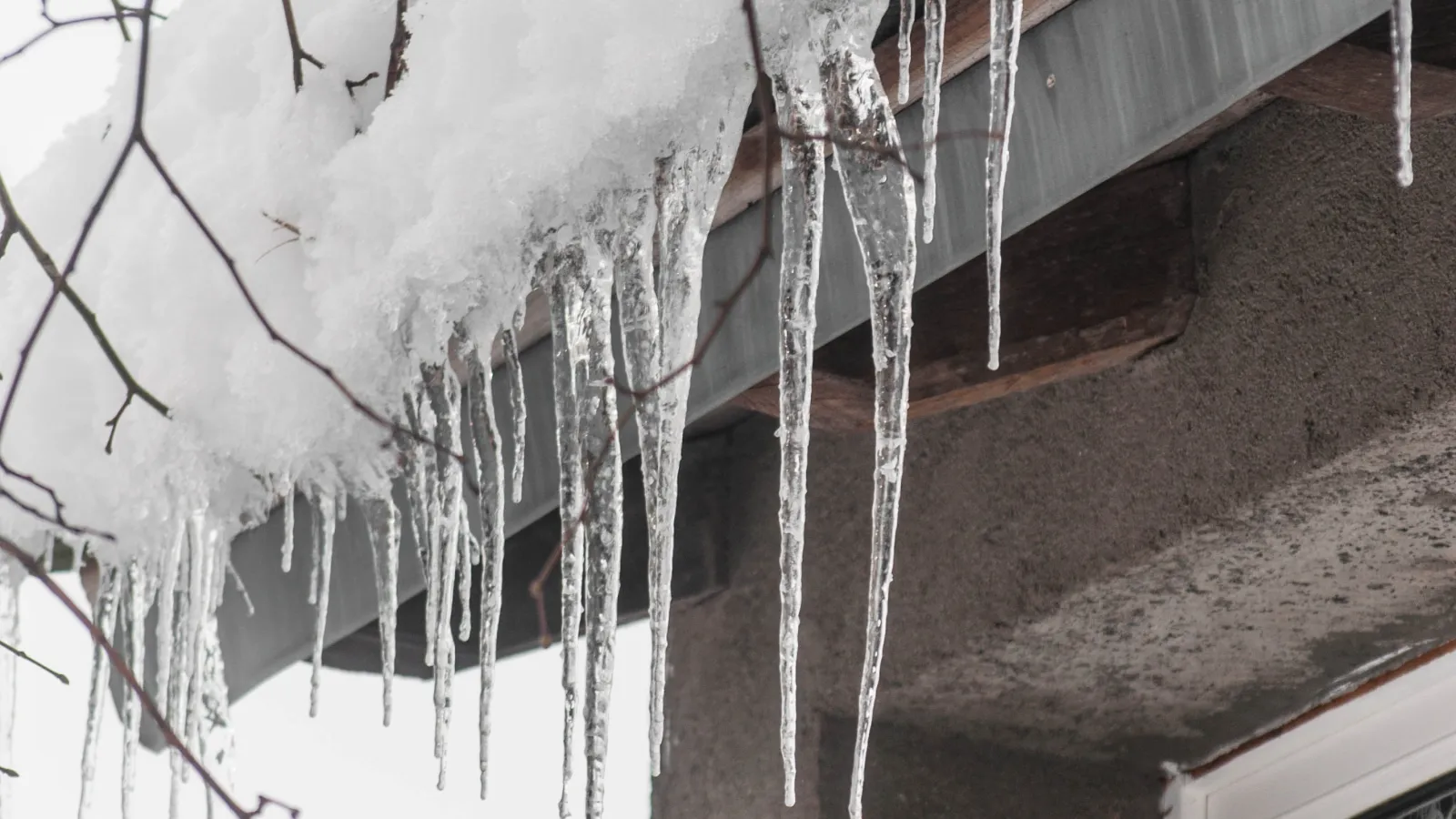People living in the northern states see icicles all the time in winter, adding a sleek icy beauty to every building. We also know what icicles are, but we might wonder why they form on the eaves of buildings. Could icicles be a sign of poor insulation?
Keep in mind that a few icicles here and there are normal in colder climates, and there's not much that can be done to prevent them. Ice dams, however, are different from icicles. Ice dams are bigger and usually form in gutters. Poor ventilation can cause ice dams just as much as poor insulation, because ventilation helps prevent the attic from getting warm enough to melt snow on the roof deck.
How Do Ice Dams Form?
You probably know that ice dams result from water dripping from your roof and then freezing at the gutter. There's more to the story than that.
When snow or ice gathers on your roof, it eventually melts from the heat building up in your attic. However, your gutter is not as warm as your attic roof, so the water freezes again at the gutter, forming a stalactite of frozen dripping water.
Are Ice Dams Bad for Your Home?
While icicles are an iconic part of winter in the north, ice dams are a reason to be cautious. For one thing, if ice gathers in your gutter forming an ice dam, it can stop your gutter system from working. If there is ever a gradual drop in temperature, these huge ice blocks begin to melt before they seep into your roof and cause mold.
If dams get too heavy and gather in one place, they might also wear down your gutters. Worst case scenario, they can tear your gutters from your roof.
Besides possibly causing mold to form, ice dams are a sign that too much heat is gathering in your attic. Good insulation keeps your roof cold enough that vast chunks of snow won't melt. Inadequate insulation makes your roof warm enough to melt snow, even when the outside temperature is well below freezing.
In short, poor ventilation or insulation may be a cause of ice dams.
How to Prevent Icicles From Forming
Icicles themselves are oftentimes unavoidable. Ice dams, however, can be prevented with proper insulation. If you think you might have an insulation problem, have an insulation professional look at your attic. They'll be able to tell you about different insulation techniques and choices that may help reduce ice dams. If you want, take pictures, or point out where the ice dams are longest or thickest, and share that with the insulation professional.
Why Should You Keep Your Home Insulated?
It's an obvious question, but there are other answers besides "insulating your home will keep you warm."
Keeping your home at the right temperature will help prevent too much condensation from forming behind your walls, and thereby preventing mold. Mold grows dangerous spores and might cause allergic reactions in some people. Pests, like insects, mice, or rats, could also get into your house via holes in your walls.
Most of all, insulating your home will save your energy bill. If you're environmentally conscious, saving energy use will lessen your carbon footprint too.
Not insulating your home presents several opportunities for damage, all of which can prove costly in the long run.
If you are experiencing ice dams in the winter, give USA Insulation a call. We offer a free consultation that will help identify the issue.



